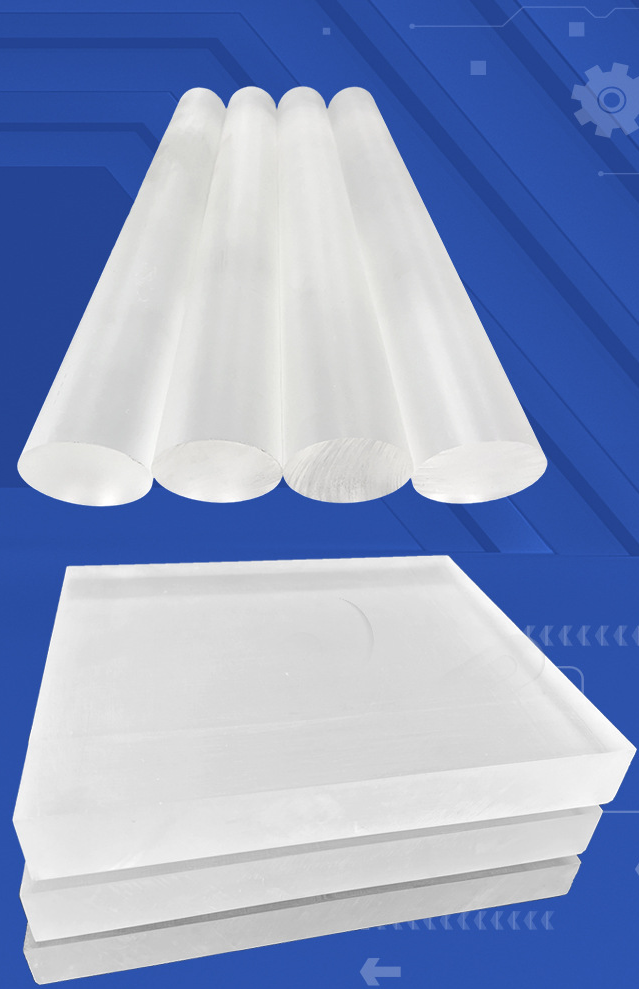PROPERTIES
Rexolite is a unique type of plastic known for its exceptional properties. It’s a cross-linked polystyrene, which gives it several notable benefits:
Outstanding Dielectric Properties
Dielectric constant of 2.53 (through 500GHz) with extremely low dissipation factors.
Valuable for microwave lenses, microwave circuitry, antennae, coaxial cable connectors, sound transducers, TV satellite dishes, and sonar lenses.
Other uses include non-destructive material testing devices, surveillance equipment, radar windows, radomes, and missile guidance system housings. One interesting application is for radar lenses, which are used for mapping the earth’s surface from fast, high-flying aircraft.
High Voltage Insulators
The ability to withstand high voltage is important for producing gap switch houses, capacitors, and other components. Rexolite is proven superior over Acrylics, Epoxies, Urethanes and other plastics for dendriting resistance (failure caused by electron bombardment).
Radiation Resistance
Superior to most plastics. Little change in dielectric loss over a wide range of exposures up to 1000M rads. It has superior resistance to mechanical deterioration by ionizing radiation.
Rigidity and Dimensional Stability
Rexolite exhibits no permanent deformation or plastic flow under loads of 10 psi to 2000 psi at temperatures of 20°C to 200°C. In addition, all castings are stress-free, not requiring any stress relieving prior to, during or after machining.
Temperature Range
Recommended operating temperature is 100°C; Glass transition at 114°C; maintains excellent dielectric properties from -270°C to 176°C (no load-short time).
Optical
Optical transmission approximately equals Acrylic – (87% visible light @ 1″ thick). Refraction index 1.59 @ 589 nanometers, 1.604 @ 486 nanometers and 1.585 @ 656 nanometers. Used in combination with acrylic lenses for color correction.
Sound Transmitting
Excellent acoustic impedance close to water. Velocity 93×10³ inches per second. Ideal for sonar lenses.
Out Gassing
Negligible at elevated temperatures.
ASTM-E-595 Total Mass Loss (TML) .04% Collected Volatile Condensable Materials (CVCM) .01%
Water Absorption
Less than .08% Rexolite 1422 has been immersed in boiling water for 1000 hours without change in dielectric constant.
Machinability
Handles well in all machining operations. Tool configuration is similar to those used on Acrylic. Because of it’s high resistance to cold flow and freedom from stress, it is easily machined by water jet or laser beam. Accuracy of .0001 can be obtained in grinding. Crazing can be avoided by using sharp tools and avoid excessive heat when polishing. Stress relieving of Rexolite is not required before, during or after machining. Always maintain sharp tooling.
Chemical Resistance
Alkalies, Alcohols, Aliphatic Hydrocarbons and mineral acids have no effect. Contact with Aromatic hydrocarbons cause swelling and should be avoided.
Light Weight
Specific gravity of 1.05. Approximately 15% lighter than Acrylic and less than half of TFE (Teflon).
Sub-zero Properties
Maintains a Dielectric Constant of 2.55. At -270°C the dissipation factor is .00019.
Flammability
Burn rate is less than 1 inch per minute.
Environmentally Friendly
Non-hazardous, contains no ingredients harmful to the environment.
Military Specification
Rexolite 1422 conforms to military specification LP-516A, type E2, formerly known as MIL-P-77C-E2.
Standard Shapes and Sizes
Rexolite 1422 rod from 1/16″diameter to 9″diameter.
Rexolite 1422 sheet from .010″ to 6″ thick.
